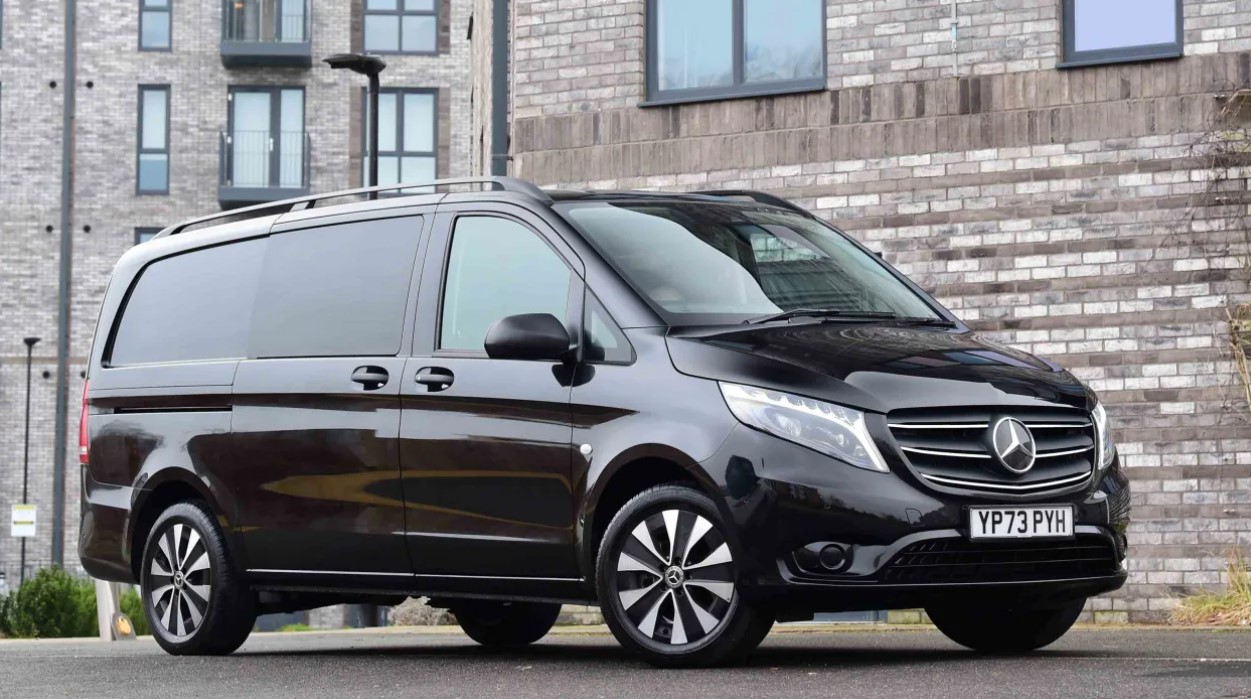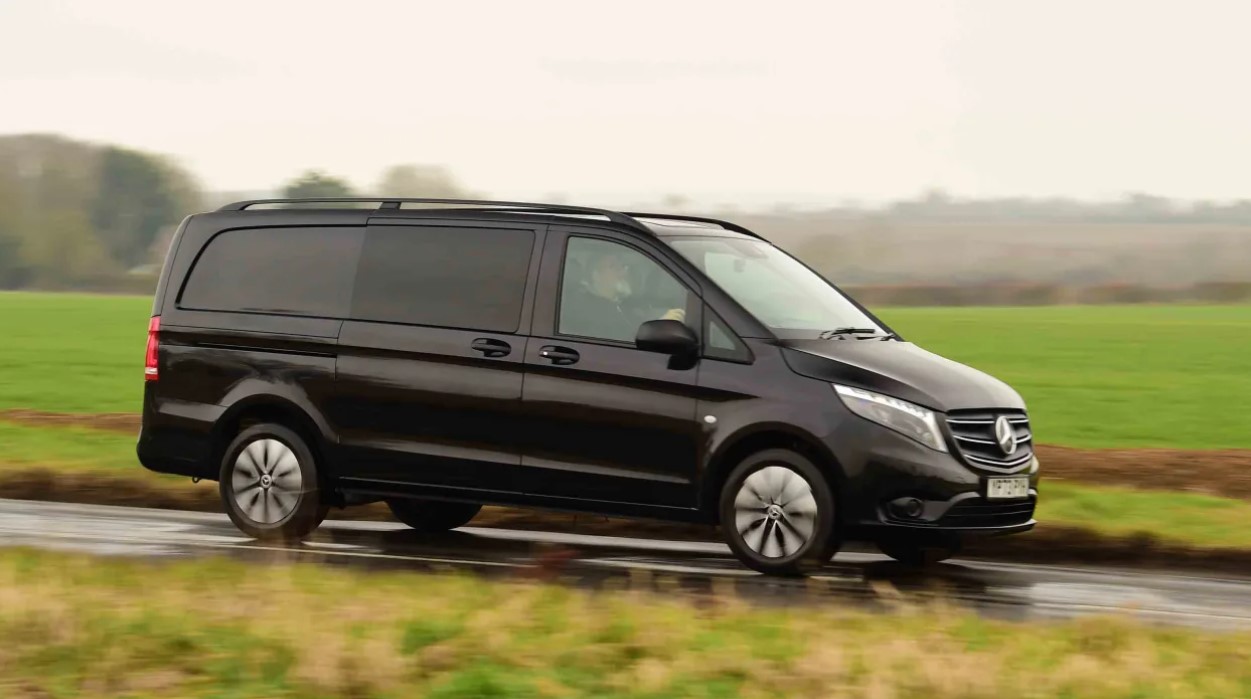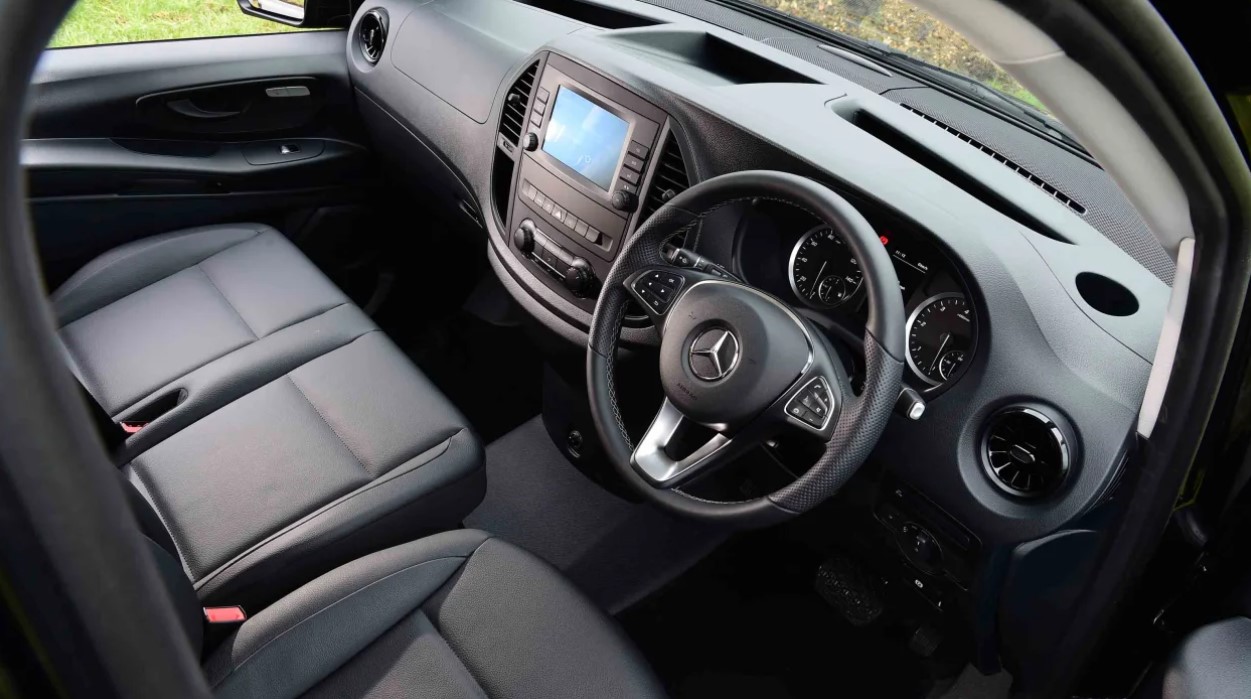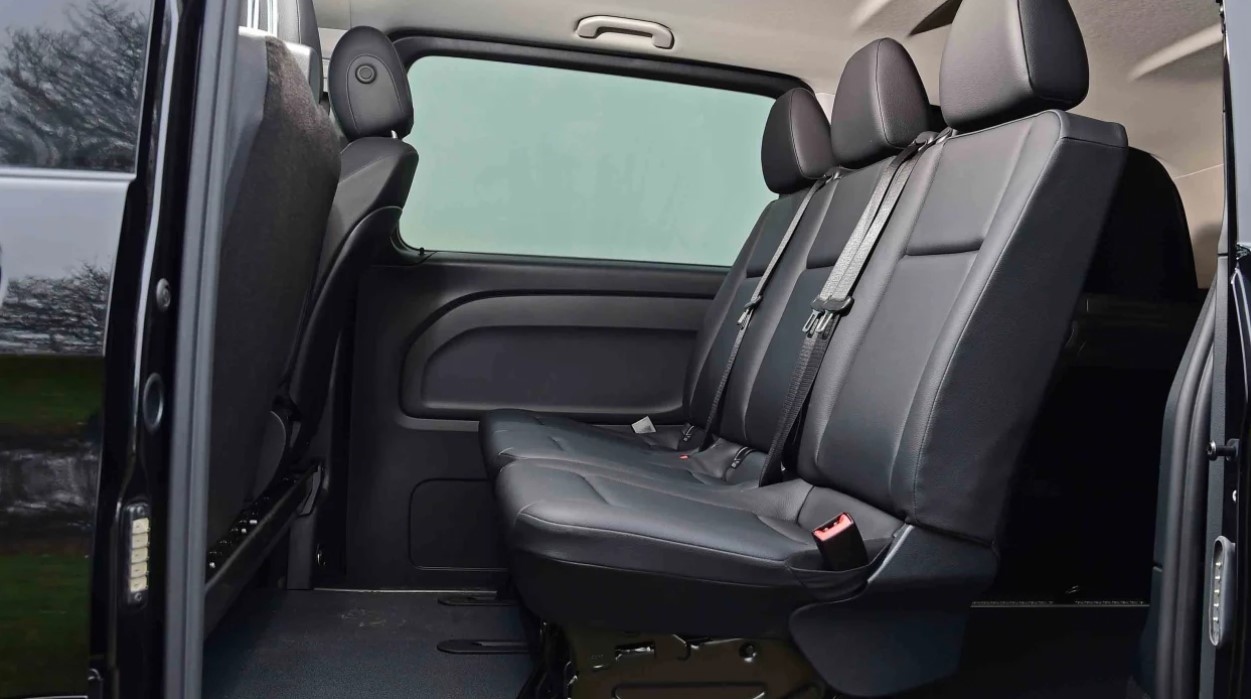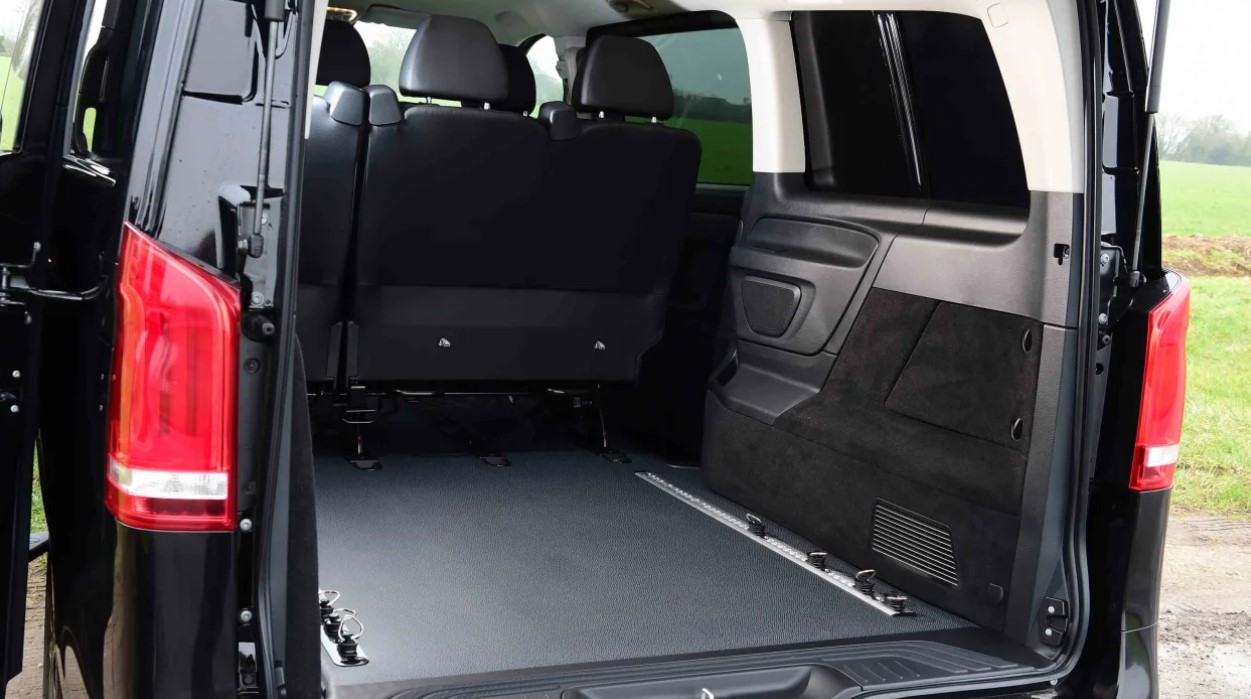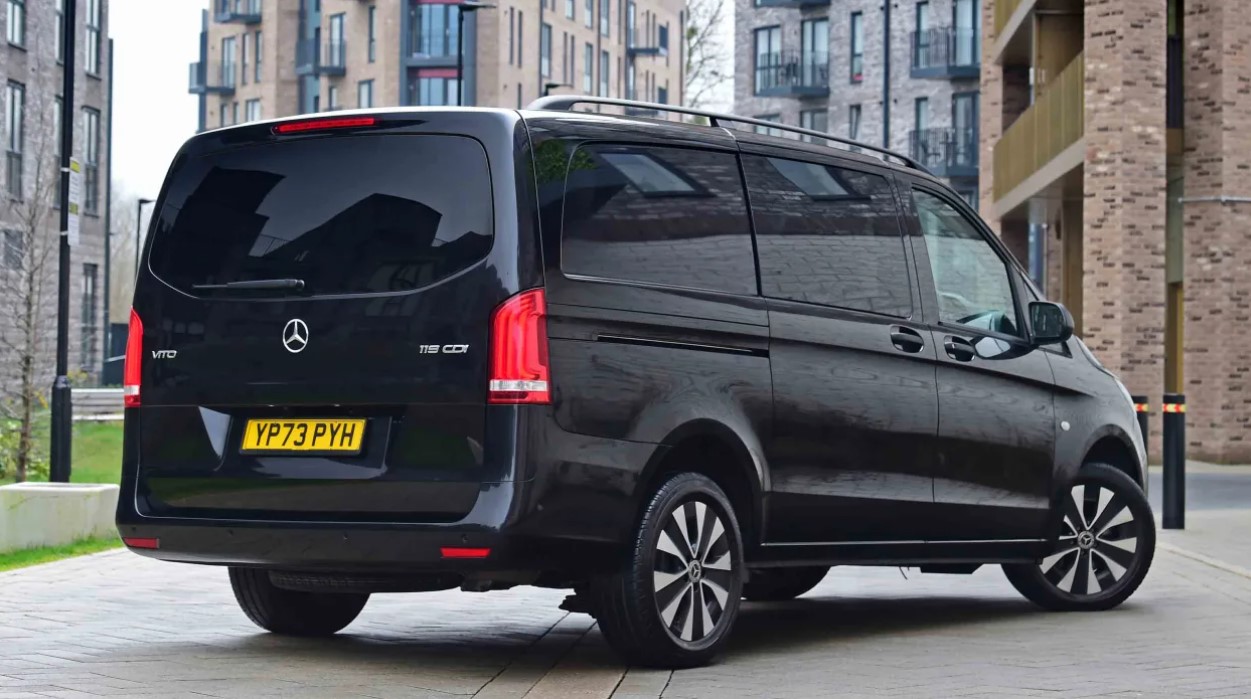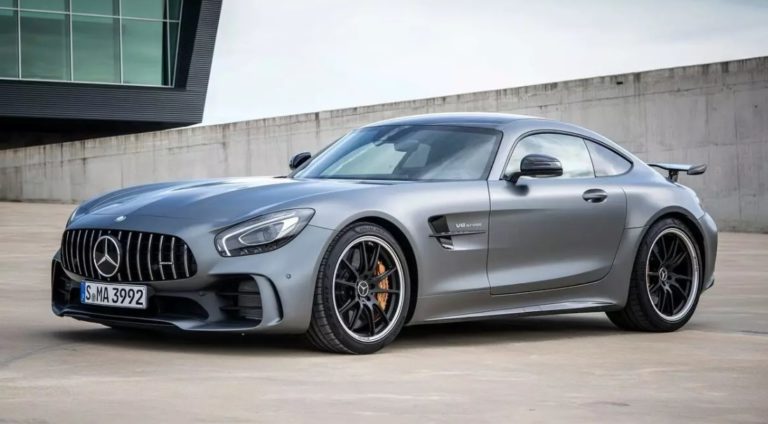2026 Mercedes Vito Redesign, Dimensions, Specs
2026 Mercedes Vito Redesign, Dimensions, Specs – The 2026 Mercedes Vito remains an excellent option despite its lengthy availability. Located between the Citan and the Sprinter, this roomy vehicle offers great value for its size. The Vito is up against some newer, more technologically advanced competitors, including the Ford Transit Custom, but it also has some tough competition from older, more well-known brands, such as the Volkswagen Transporter, Vauxhall Vivaro, Renault Trafic, Citroen Dispatch, and Peugeot Expert. When compared to competitors, the Vito makes a decent case, even if it isn’t the cheapest van available. The vehicle’s dignity is enhanced by its three-pointed star symbol.
Despite being on the market since 2014, the new Vito van has remained competitive owing to upgrades and a smaller model lineup. The electric eVito is the only model available with front-wheel drive; all the other vans in the range have L2 or L3 body lengths with rear-wheel drive. Diesel models with front-wheel drive are out of production. Panel vans and crew cabs with three or six seats are available to you.
You may convert the Mercedes V-Class into a Vito by exchanging bodyshells if you need more seats. However, the model in issue is priced appropriately because it is more suitable for high-end executive transportation. 2026 Mercedes Vito Redesign
Table of Contents
2026 Mercedes Vito Redesign and Update Plan
Exterior & Interior
The Vito’s cargo space is sufficient for most situations; the L2 panel van offers 6.0 cubic meters of space, while the L3 panel van offers 6.6 cubic meters. Mercedes is on par with its rivals, like the Renault Trafic and the Ford Transit Custom, which offer higher-roof vans.
Both panel vans can accommodate loads up to 2,290 mm and 2,520 mm in length, respectively. With an opening hatch in the bulkhead, however, items as long as 2,831 mm and 3,061 mm can be brought to the cabin.
Payload capacities range from 873 to 930 kg, while some rivals can transport loads exceeding one tonne. When you reach near to the eVito’s maximum load capacity of 882 kg, you’ll notice a decrease in the van’s range.
At no additional cost, you have the option to use either the rising tailgate or the twin barn doors to reach the vehicle’s rear. You may personalize your Mercedes with windows for the sliding side doors and the steel bulkhead that divides the cargo area from the cabin. Not many rivals provide sliding side doors as standard equipment, but Mercedes does.
There is a 3.6 cubic meter capacity in the L2 Crew Van and a 4.1 cubic meter capacity in the L3 Crew Van. Without the optional bulkhead, long, thin items can slip beneath the second-row seats, despite the floor length being 1,397 mm (or 1,631 mm for the L3 model). A payload weight of 781 to 809 kg is possible.
Although the Crew Van has a bench seat in the rear, it isn’t as adjustable as the seats in a standard minivan. Although they do not fold flat, their removal does increase the storage capacity. However, when taken from the vehicle, they are heavy, bulky, and placed in a 2+1 arrangement. Next, you must determine an appropriate location for them. Standard on all Mercedes vans is wood flooring, which may be extended to the sides for added protection, and the company also offers accessories like floor rails for securing cargo in the back.
Inside, you’ll notice differences between the Vito and the V-Class passenger carrier, particularly when compared to older versions, despite the fact that both are manufactured in Vitoria, Northern Spain.
In contrast to the V-Class, the Vito has a rugged, long-lasting front end that forgoes the usual Mercedes passenger vehicle plushness. The design is simple, but the craftsmanship is impeccable. The circular air vents and other controls are borrowed from passenger automobiles, but the polymers have been strengthened for commercial usage.
Despite its diminutive size, the Vito now has an infotainment screen that is seven inches big, equipped with Bluetooth, a DAB radio, Apple CarPlay, and Android Auto. Under the touchscreen, you’ll see two USB-A connections, perfect for connecting any external devices you might have. While there’s plenty of room for little items, larger ones will have a tough time fitting in the tight door pockets and without a shelf to put them on.
Mercedes has chosen not to equip the Vito with integrated mounts for mobile devices and computers, much like its rivals. Instead of the alternatives—driving with a phone or balancing a laptop—that the report says are dangerous, custom “mobile office” solutions seem more enticing. Most drivers will likely purchase an aftermarket phone cradle instead than settling for an unlined cubby hole on the dashboard.
Seats in the Vito are excellent because they are solid but supportive, with several of adjustment options (including height) and decent lateral support. It surpasses the Vivaro and the Ford Transit Custom because to its lower ride height and more car-like handling.
Like other van-based passenger versions, the Vito has excellent visibility. The reverse camera, front and rear parking sensors, and ease of installation make low-speed maneuvers a snap, as long as you have the area to put it.
Two adults may ride shotgun in the Vito’s back seat, and three adults can easily squeeze into the spacious cabin without touching elbows. There is an armrest for the center seat passenger to use so they don’t contact the driver. The front passenger seat is fixed and cannot be changed in any manner, but the driver’s seat may be fully tilted and altered in height. However, with plenty of legroom, travelers shouldn’t consider this an issue.
There is a bench seat in the back of the Vito Crew Van, and it can fit three adults. Although it has plenty of storage space, it can’t be folded or flipped forward to accommodate more cargo because it’s attached to the front passenger seat. The only way to achieve that is to eradicate them entirely, which is certainly not an easy task.
The Night Edition adds heated front seats and imitation leather upholstery to the vehicle. Having said that, it is more affordable than a V-Class without sacrificing luxury. 2026 Mercedes Vito Redesign
2026 Mercedes Vito Specs
Engine & Performance
The Vito’s 6.0 or 6.6 cubic meter panel van load capacities are on pace with the best medium-sized vans available, and the vehicle also comes in Crew Van sizes of 3.6 or 4.1 cubic meters. Unlike some of its rivals, the Mercedes van’s luggage space and passenger compartment are integrated, however a bulkhead separator may be installed as an optional extra.
In addition to an all-electric model, the Vito is offered with three diesel engines. All three diesel models—114 CDI, 116 CDI, and 119 CDI—share an identical 2.0-liter four-cylinder powertrain. The 114 CDI is an intimidating rider because to its 132 horsepower and choice of six-speed manual or nine-speed automatic gearbox. The 114 CDI and the 116 CDI, both of which produce 184 horsepower, do not come with a manual transmission.
There are three distinct trim levels, and the engines you receive are proportional to that. Start with the entry-level eVito electric model or the weakest diesel engine, then go all the way up to the Premium trim to unlock the mid-range 116 CDI engine and get all the bells and whistles. In addition to featuring the most powerful diesel engine, the top-tier Premium Night Edition has a stunning design. With the latter’s extensive upgrades, the practicality of the standard van is brought together with the premium elegance of the V-Class. The crew van layout is made more discrete with the usual Obsidian Black metallic paint and color-coded bumpers at the front and rear, while the rear bodywork blends seamlessly with the dark-tinted rear windows of the sliding doors. Identical LED headlights and diamond-cut alloy wheels adorn the front bumper, which also has chrome embellishments.
It seems excessive to ask people to pay more for an older van that has a Mercedes logo on the nose, even if the Vito is generally a well-made vehicle. Having said that, the Vito is an excellent choice for individuals who prioritize comfort, style, technology, and refinement.
The current Vito range uses a 2.0-liter four-cylinder turbodiesel in different combinations, similar to its mid-sized van competitors, as opposed to older versions that utilized smaller diesel engines. Due to the enhanced capacity, each unit more sensitive, since it helps to supply more muscle.
Three different CDI models are available, each with a different combination of horsepower and torque: 114 bhp, 116 bhp, and 119 bhp, 184 bhp, and 400 Nm, respectively. Since the maximum torque values of all three engines are reached at rpms lower than 1,400, there’s no need to strain yourself too much while pulling heavy weights.
The Vito’s rear-wheel-drive technology gives it superior lane-holding and corner-exit traction, allowing it to breeze over wet roads. Both the L2 van and its L3 counterpart had 11.8 and 12.5 meter turning circles, respectively, when navigating around town.
The more powerful engines are standard on the 114 CDI, although the 9G-Tronic auto is available as an option. The source is Mercedes passenger autos, and it functions admirably when left alone. The paddles are situated behind the wheel, and you may change gears with a small delay that is barely perceptible. The auto gearbox is one of the greatest choices for vans, but its expensive price makes it unaffordable for others.
By going with the eVito, you may achieve a reasonable acceleration right from the start. The surface is smooth at slower speeds, but the tire noise becomes the most apparent issue at higher speeds. Using the accelerator too much, meanwhile, can drastically cut into the van’s driving range.
The Vito has the same sturdy, solid feel as other Mercedes vans when you get in the driver’s seat. The electromechanical steering system isn’t as weighted as the best drivers’ vans, which makes you feel less connected to the road. At first, we still thought the foot-operated parking brake was a little strange, even with the standard hill hold feature. A manual gearbox is tough to use, but an automated transmission makes it easier.
Because there is no rear bulkhead to isolate the cabin from the cargo area in the Crew Van, road noise travels into the interior at higher frequencies. Even while it’s perceptible, it’s not debilitating. You can remedy this with a full-height bulkhead, which is priced at about £100. 2026 Mercedes Vito Redesign
2026 Mercedes Vito Fuel Economy
The elimination of front-wheel drive from diesel Vito models has reduced the range’s average fuel economy. When equipped with an automatic transmission, the 114 CDI manual can get 38.7mpg combined, but this drops to 38.2mpg.
Both the base 116 CDI diesel and the premium 119 CDI engine achieve 37.6 and 36.7 miles per gallon, respectively, according to the official WLTP test. Fuel economy for the Crew Van ranges from 35.8 to 37.1 mpg, because to its extra weight; nevertheless, here only the 116 CDI and 119 CDI diesels are offered.
Standard equipment on all vans includes stop-start engines, low-rolling-resistance tires, and aerodynamic panels installed under the vehicle for improved aerodynamic efficiency. One option for meeting the present emissions regulations is the AdBlue system, which employs SCR exhaust after-treatment technology. The trip computer will alert you when the 24-liter AdBlue tank needs to be replenished, therefore this means that the van has an AdBlue tank installed.
With its standard 57-liter fuel tank, the Vito should be able to go around 420 kilometers on a single tank of gas. With the larger 70-liter tank that Mercedes offers as an option, the range may be easily boosted by 100 miles, even with the poorest official fuel efficiency estimations.
The first electric eVito had a 41 kWh battery that limited it to 93 miles in official tests. However, the latest model has a larger 66 kWh pack, with 60 kWh useable, which increases the range to 162 miles. You shouldn’t have any problem getting that range on typical usage if you drive the vehicle hard on stop-start urban runs. The range is significantly reduced when you run on highways at higher speeds. The eVito can be charged to a capacity of 10-80% in around 35 minutes using a rapid charger, and slightly less than 10 hours using a 7kW wallbox charger (because of the maximum charging speed of 80kW).
The Vito can go up to 25,000 miles—roughly the same as two years—before it needs servicing. The precise moment a service is necessary is determined by the onboard ASSYST computer based on a wide variety of variables. The van’s fully galvanized body allows Mercedes to provide a 12-year anti-corrosion warranty, and compared to the previous Vito, maintenance and repair costs are reduced by as much as 6.4%.
2026 Mercedes Vito Safety Features
The Vito continues Mercedes’ tradition of offering extensive safety equipment. There are a number of systems that can help you avoid accidents.
Standard on every model are front and rear airbags, with pelvic and window bags available as add-ons. The Crew Van does not come equipped with additional airbags to safeguard passengers in the back. Adaptive electronic stability program (ESP) is a suite of safety features developed by Mercedes that aims to replace airbags. These features include anti-lock brakes (ABS), anti-skid regulation (ASR), electronic brakeforce distribution (EBD), a brake assist system (BAS), load adaptive control (LAC), and EUC understeer control.
The Vito is well-suited for towing because to its rear-wheel drive setup, and the trailer stability aid (TSA) system prevents fishtailing by adjusting the ESP parameters in response to the detection of a trailer. The rear-parking camera has a “coupling zoom” feature that helps the driver locate the towing hitch while joining a trailer.
You may program Mercedes’ adaptive cruise control to keep a specific distance from you. Also, if you get too near to the car in front of you, the distance warning system will go off, and if you stray from your lane without signaling, lane keeping assist will let you know. The advanced lighting system of the premium night edition adjusts the high-output LED headlights’ beam breadth and brightness according on the driving conditions. Fully loaded Vitos are among the safest vans you can own.
2026 Mercedes Vito Release Date & Price
roughly £30,000 ex.VAT is the price of the 2026 Mercedes Vito’s lowest model, while roughly £45,000 is the price of the most potent and lavish Crew Van. Considering the Vito as a passenger vehicle, this is a considerable reduction compared to the price of a brand new V-Class, which may appear like a lot. Starting at around £48,000 (not including taxes), the eVito is more expensive due to its battery technology.
Note: The details included in this blog post are derived from pre-release material that was accessible when the article was written. If you want the latest information, you should check official sources or call your nearest dealership.
